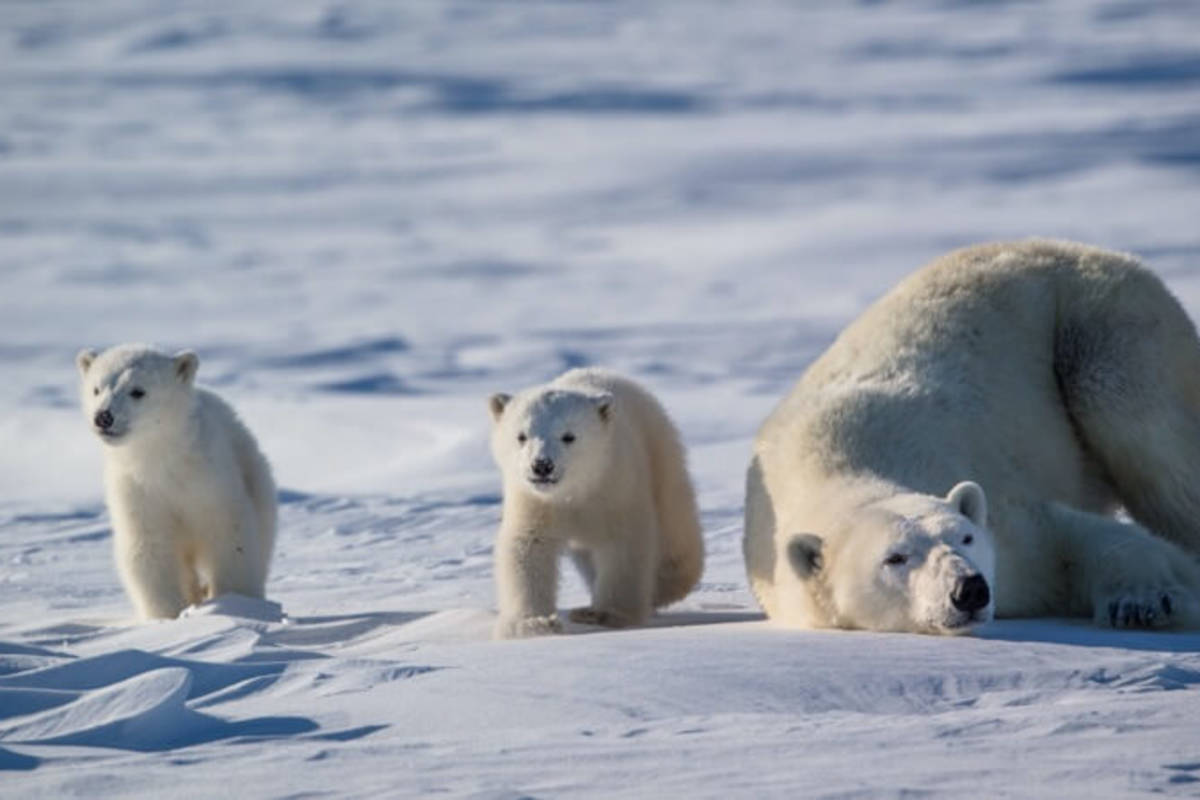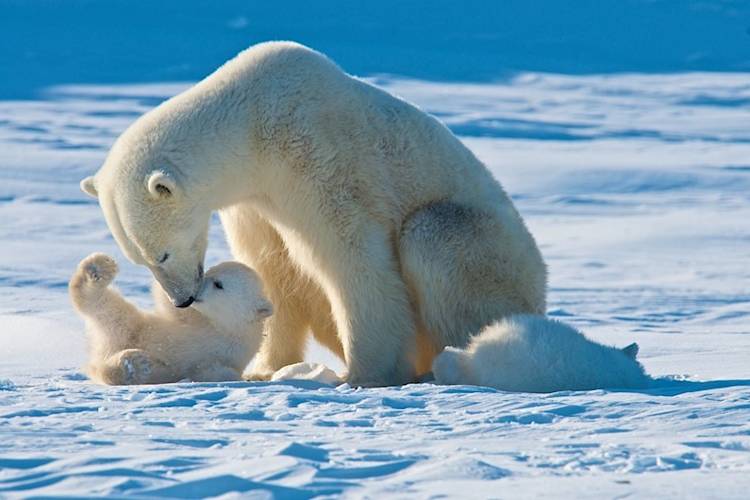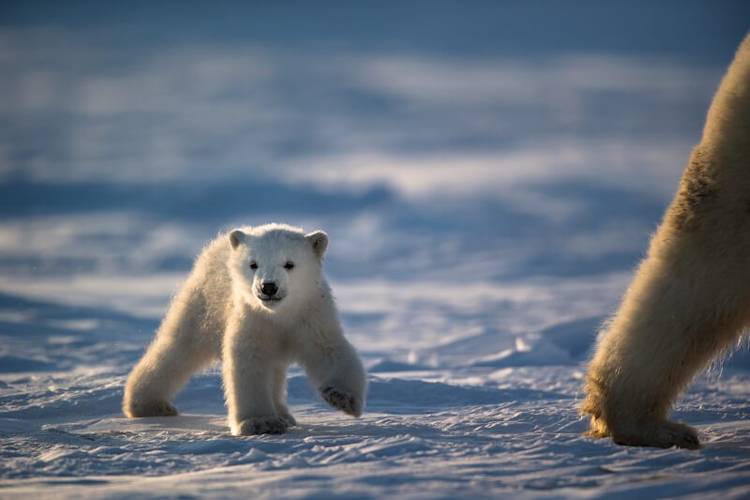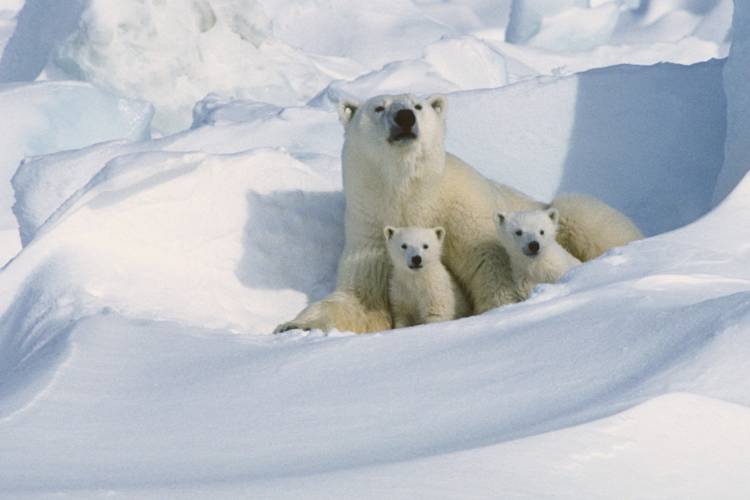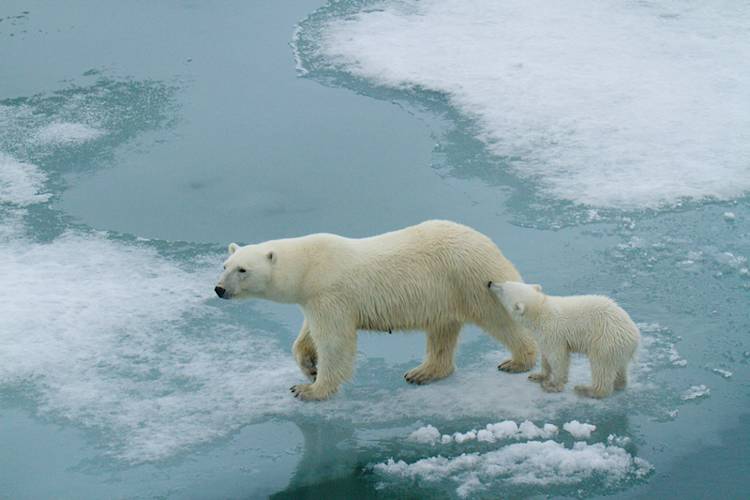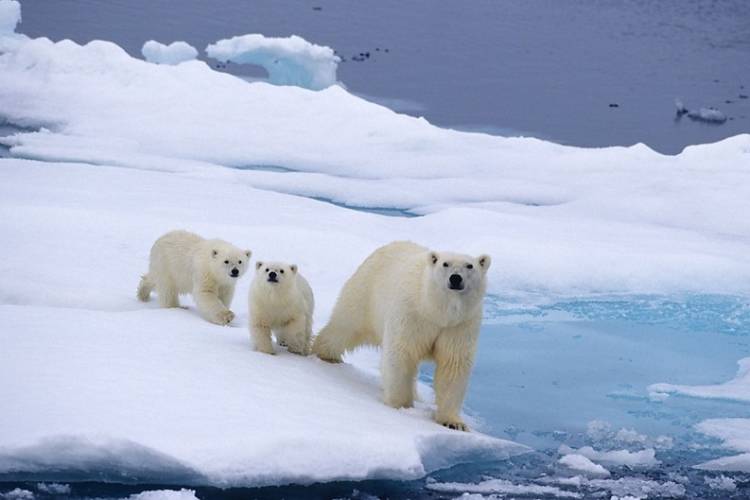As I write this, my own little cub tears around the house, demanding water and snacks and attention. She’s up and down and up and down and up … I am tired but at the same time can recognize how privileged I am. At my fingertips are all the conveniences of modern life to help me raise my daughter—from grocery stores and indoor heating to FaceTiming with Nana. I can offer books or toys, keep our home safe, and turn on Baby Shark to distract for a desperately needed minute. Plus, so much coffee.
Polar bear moms have no such support. Not even close.
All moms work hard, but polar bears are undoubtedly some of the hardest working single moms. Here are five of my favorite facts about polar bear families:
1. Polar bear moms have one of the longest fasting periods in the animal kingdom.

